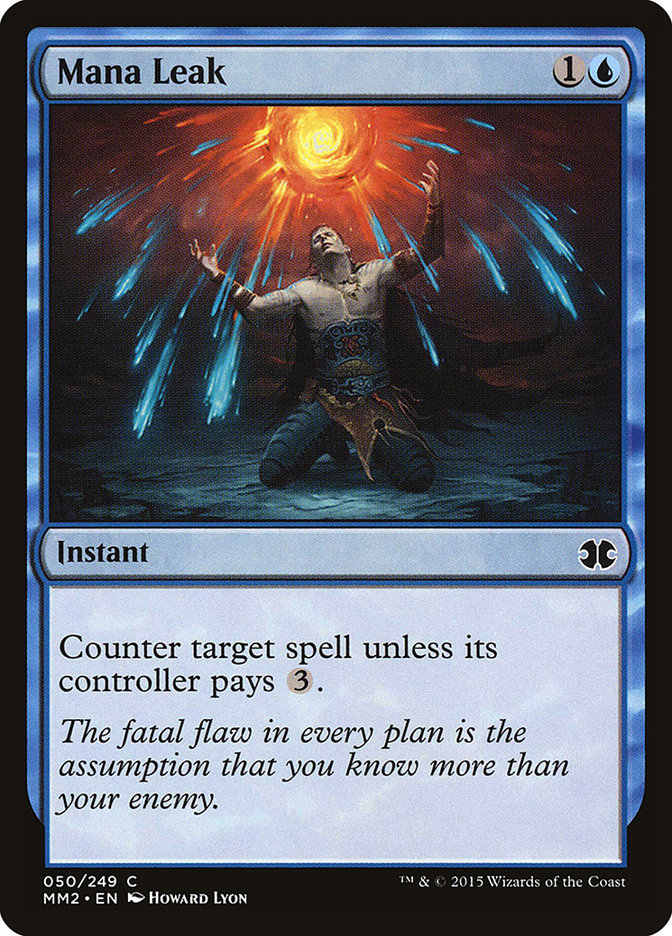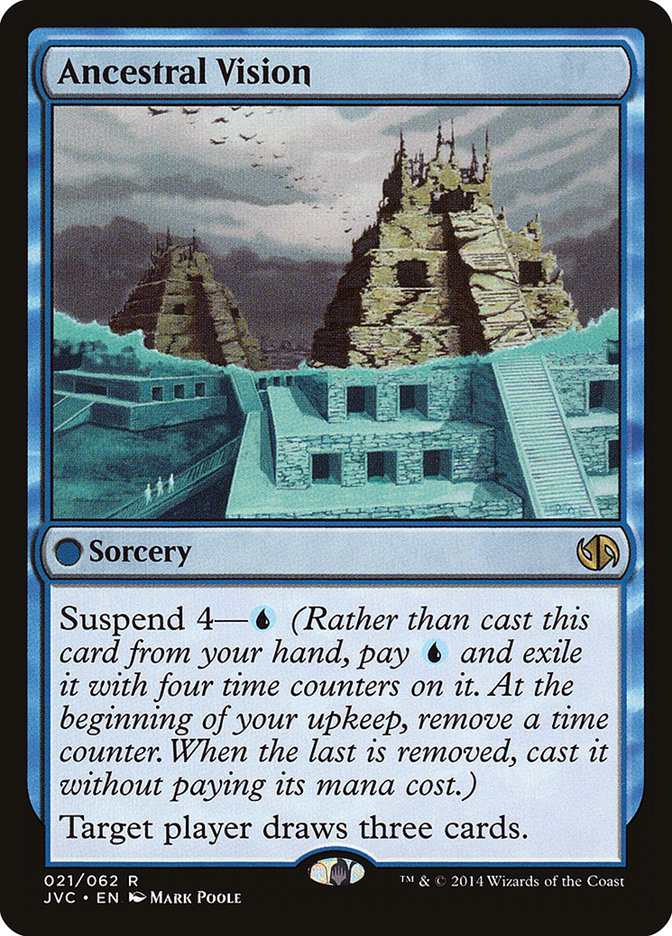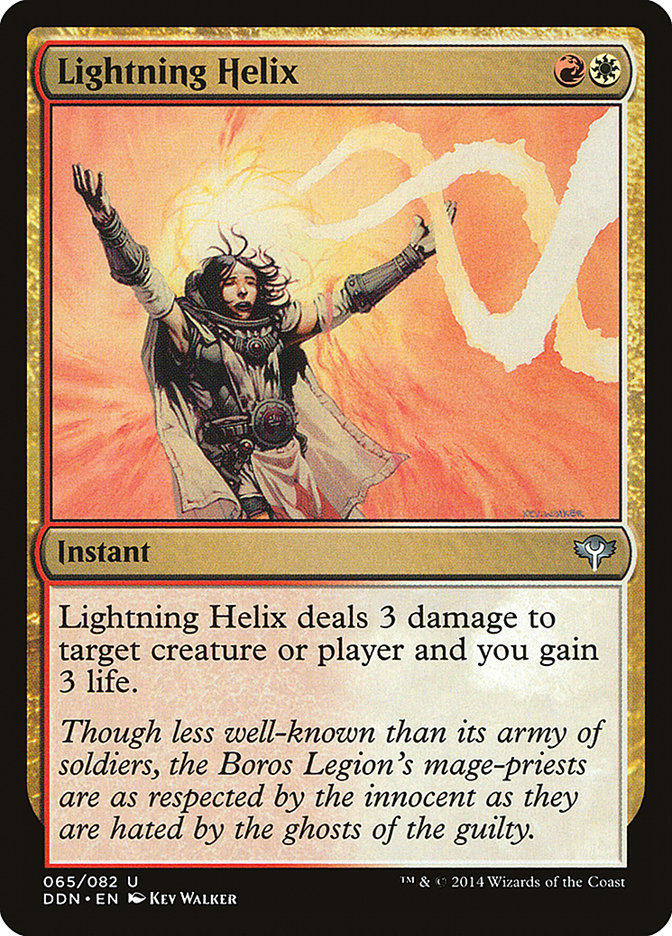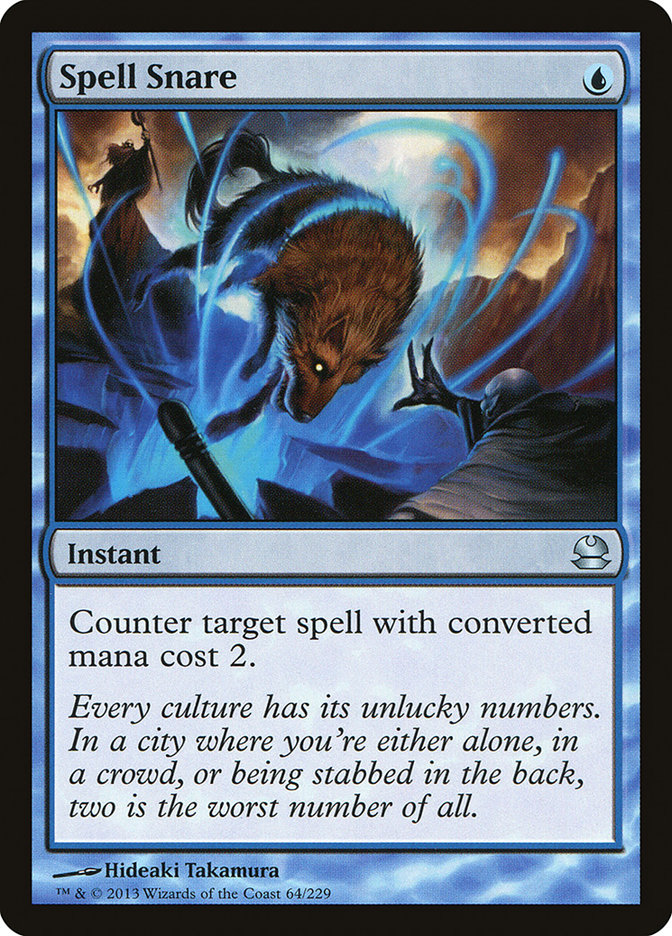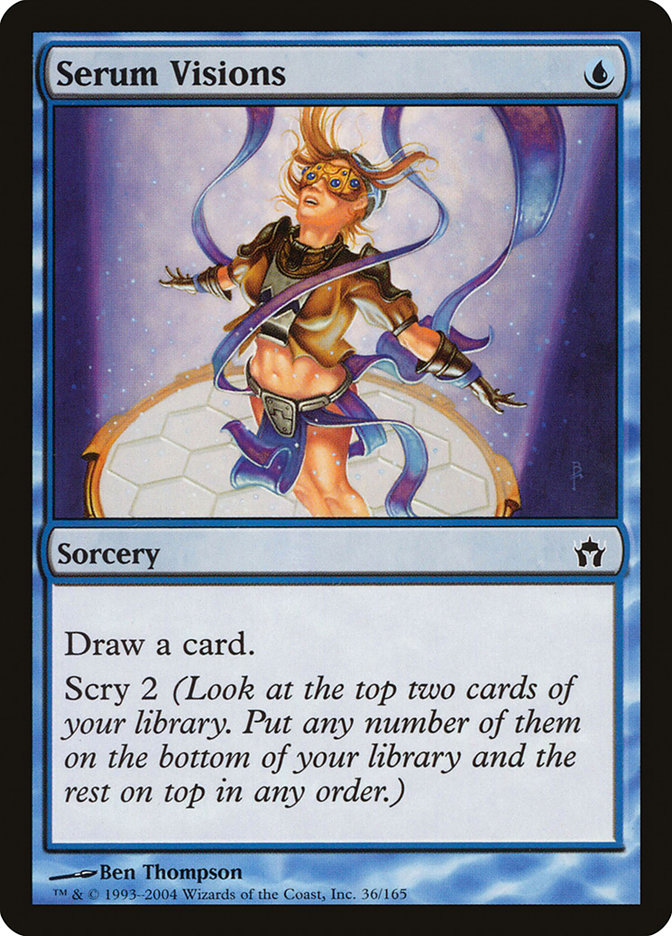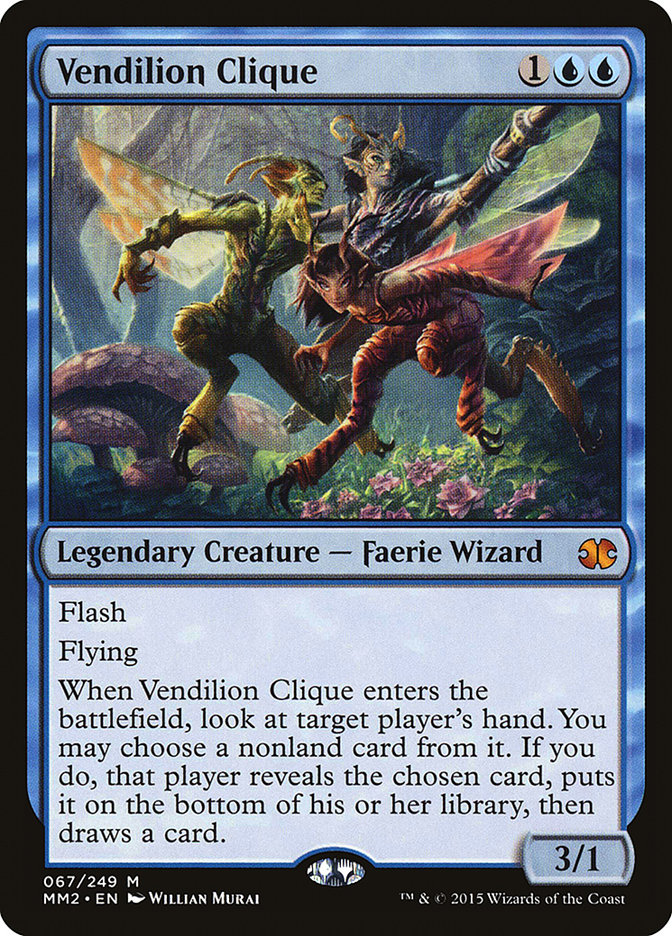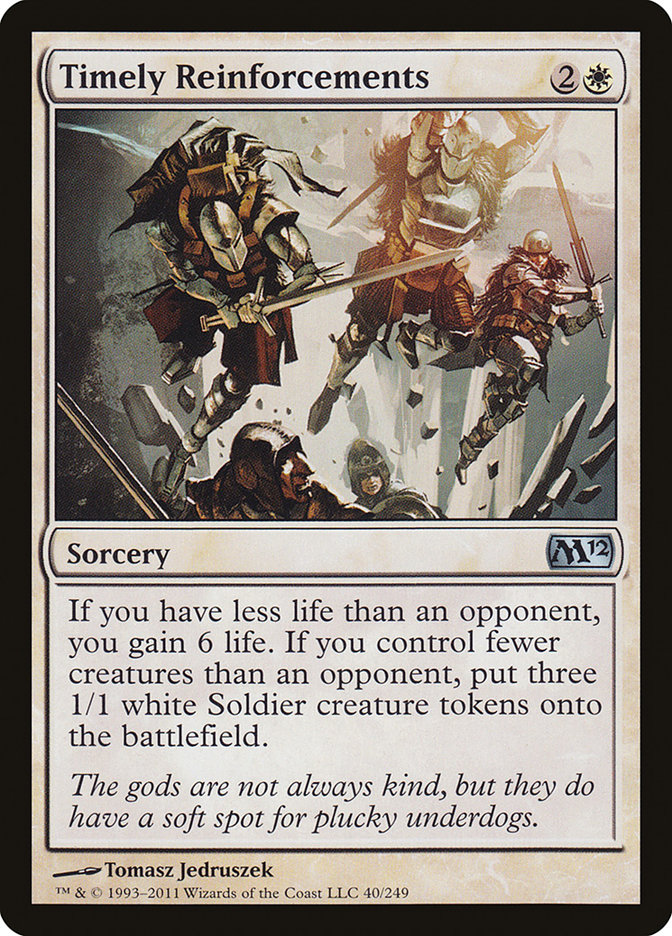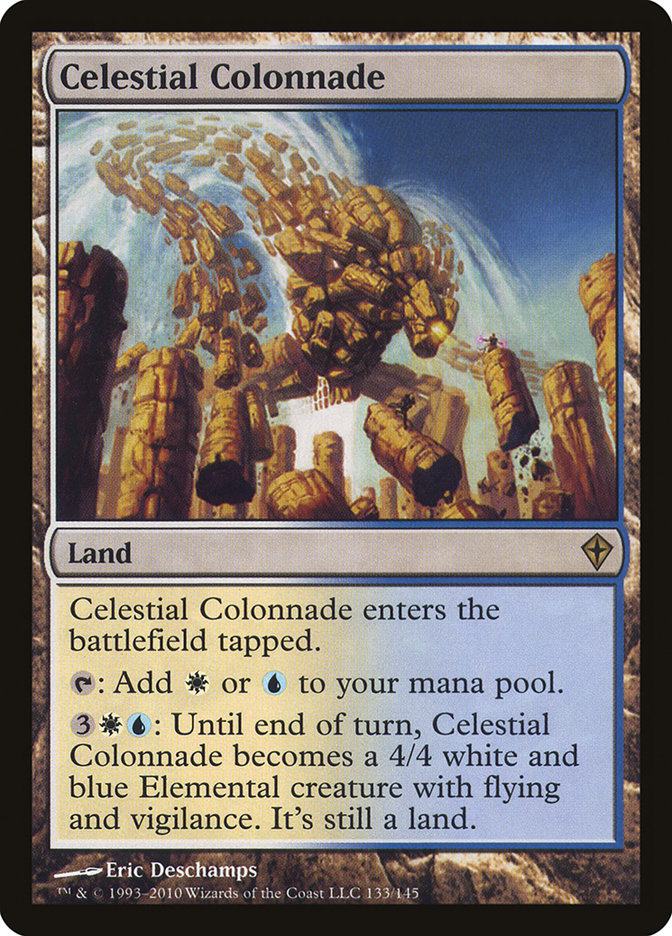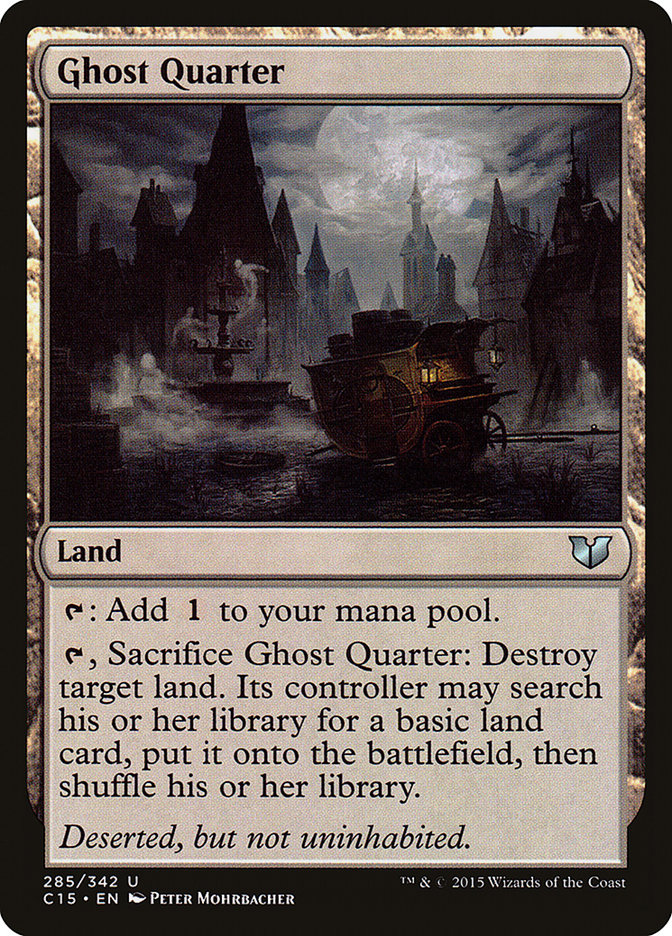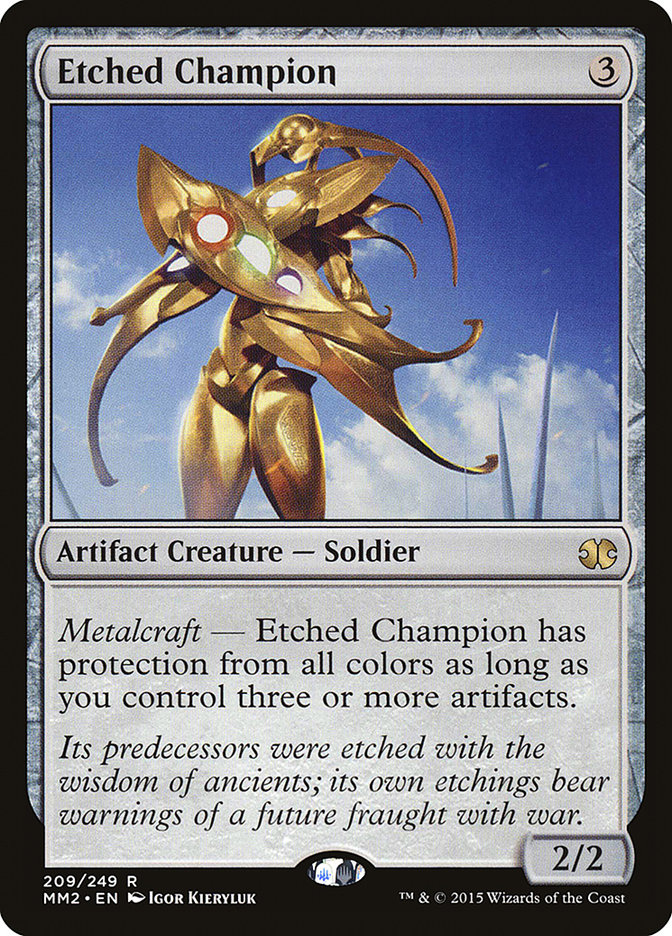Jeskai Control is the best deck in Modern.
There.
I said it.
Okay… well, the truth is, no deck in Modern is head and shoulders above any other deck at the moment, but Jeskai Control is certainly in the running for the top spot. The deck combines the format’s best permission and removal spells with the format’s best creature for a lean pseudo-combo kill that can end the game very quickly.
Creatures (6)
Planeswalkers (4)
Lands (23)
Spells (27)

Today we are taking an in-depth look at the deck, so let’s jump right in!
Why Play Jeskai?
One of the long-standing truths about Modern is how hard it is to build a proper control deck in the format. There are so many decks in the format that present such a wide variety of threats across all different spectrums that it is very difficult to have the right answer at all times. Trying to play a pure control deck is often folly, as eventually you will run into a deck that is doing something linear that you are not prepared for, and because you don’t have a clock, they will have all the time they need to set themselves up.
There’s also the issue that the best counterspells in the format are tempo counterspells that get worse as the game goes on. Without Counterspell or another playable hard counter, it’s hard to play a purely controlling game when Mana Leak goes from your best counterspell in the early-game to essentially worthless in the late-game. These cards are great at creating an early advantage but don’t lend themselves well to drawn out affairs.
As such, control decks haven often struggled in Modern unless accompanied by something like the Splinter Twin combo to close out games quickly.
Enter Nahiri, the Harbinger.
While the Splinter Twin combo could kill on turn 4, it did require you to take up around ten slots in your deck with cards that were either underpowered (Deceiver Exarch) or essentially blank (Splinter Twin). Splinter Twin decks were built like control-combo hybrids, with control elements that leaned more towards a tempo game than a pure control strategy.
Nahiri, the Harbinger is a little more brute force, being a four-mana sorcery-speed spell that doesn’t end the game on the spot but also only asks that you waste a single slot in your deck for Emrakul, the Aeons Torn to facilitate the combo kill. While Nahiri is not a playable card if played straight-up in Modern, it is still a reasonable planeswalker in a control shell that does a number of reasonable things before winning you the game.
Having a win condition with a ceiling of “win the game in two turns” and a floor of “medium planeswalker” is a fantastic place to be. Nahiri also ends up being a nice answer to a variety of corner-case scenarios that come up in Modern, like Daybreak Coronet or maindeck Blood Moons.
Nahiri, the Harbinger also has the special ability of being very hard to kill.
Most of the most commonly played removal and interaction in the format can’t touch Nahiri, which means your opponents usually must attack her if they want to get her off the table. Against a deck packing so much removal, this is usually a losing proposition.
Even if Nahiri, the Harbinger doesn’t win the game outright for you, it will often win you the game by forcing your opponent to spend a large amount of their resources not dying to it. Nahiri going to six loyalty to start is huge, and your opponent will be forced to make bad attacks and throw random Lightning Bolts at it just to avoid dying to the ultimate. Just like the old Splinter Twin decks, you win a lot of games with a combination of Snapcaster Mage and Lightning Bolts because your opponent spent so much of their energy not dying to Nahiri.
Other decks have tried to slot the Nahiri, the Harbinger package into their already existing strategy, but that is usually a mistake. Nahiri slots seamlessly into the Jeskai Control package, helping to complement the deck’s control elements while providing something it has never had before— a fast win condition.
The Deck
Aside from the already discussed Nahiri, the Harbinger, Jeskai is essentially just a lean control deck looking to stabilize the game as soon as possible.
The other two major elements of the deck are the card advantage provided by Ancestral Vision and Snapcaster Mage.
Ancestral Vision was initially in the sideboard of the deck for grindier matchups but has since been moved to the maindeck and become a large part of the deck’s main plan. Ancestral Vision allows you to play a longer control game with the raw card advantage it provides, giving you an alternate angle of attack from just slamming Nahiri. Nahiri also alleviates some of the downsides of drawing worthless Ancestral Vision copies in the mid-game, as you can just Rummage them away with Nahiri’s +2 ability.
Ancestral Vision provides its own unique set of deckbuilding restrictions, however, as it fundamentally alters how your deck functions. When you put Ancestral Vision in your deck, you need to put a huge amount of emphasis on having a large amount of cheap and efficient spells. The reason for this is twofold, as you need to be able to cast as many spells as possible early to stay alive so your Ancestral Vision can count down, and then you need to be able to cast all the cards you draw as quickly as possible once your Ancestral Vision comes off suspend.
This means bigger card advantage cards like Cryptic Command, Electrolyze, and other planeswalkers are not where you want to be when you are maindecking Ancestral Vision. It is possible to not need cards like this because of how efficient and clean of a win condition Nahiri, the Harbinger is.
Snapcaster Mage is your other main route to card advantage, and not much needs to be said about how good Snapcaster Mage is. Prioritizing cheap spells for Ancestral Vision also makes your Snapcaster Mages even better, and this is the best Snapcaster Mage deck in the format.
Jeskai boasts perhaps the best removal suite in all of Modern, as playing both red and white gives you access to the two best removal spells in the format in Lightning Bolt and Path to Exile. It’s hard to understate how much better one-mana removal spells are than two-mana ones, as Modern is a quick and harsh format to anyone who stumbles. Aside from their brutal efficiency, having one-mana removal spells is also extremely important for maximizing Snapcaster Mage.
The extra removal slots go to a trio of Lightning Helix. Not all Jeskai lists are so dedicated to Lightning Helix, but the card is quite important for a variety of reasons. Lightning Helix helps to hammer home your aggressive matchups, and when you are playing Ancestral Vision, very often all you need is a bit more time to survive before you draw a fistful of cards and get back into the game. Not only that, but against some of the combo decks in the format, it can be hard to resolve your four-mana planeswalker and not just die immediately. This puts a lot of pressure on the flash portion of your deck to operating smoothly, and between Lightning Bolt, Vendilion Clique, Snapcaster Mage, and your counterspells, you have enough burn and flash action to have that be a viable plan when necessary.
Lightning Helix is definitely one of the flex spots in the deck, but the metagame would have to shift a good amount to consider cutting them.
While your creature removal is important, not all decks rely on creatures to get the job done. Your countermagic suite is extremely lean and efficient and allows you to interact with your opponent as early as turn 1. Mana Leak and Remand are fantastic catch-alls, and Spell Snare is one of the most efficient answers in the format.
There’s a very important balance to be had, though, as while your counterspells are instrumental in your early-game plans, you can’t afford to play too many of them.
Like we said earlier, Ancestral Vision requires you to play a high density of cheap spells so that you can play as many of them as possible when it comes off suspend and catch back up if you’ve fallen behind. Unfortunately, while your counterspells are great in the early-game, they aren’t very good at catching you back up if you are behind. If you are treading water and hoping for your Ancestral Vision to catch you back up and you then draw a land and two Spell Snares, you’re probably dead.
We may not have Preordain or Ponder, but Serum Visions does a reasonable job of filling the early-game cantrip slot. Serum Visions acts to smooth out your draws and also helps keep your Snapcaster Mages relevant early on against combo or control decks that don’t have a lot of creatures.
Vendilion Clique and Timely Reinforcements occupy the last two flex spots in the deck, and each serves a different purpose.
Vendilion Clique is one of my favorite cards, and its versatility across all formats is well-documented. Vendilion Clique is one of your best tools in combo matchups; is great at setting up a turn 4 Nahiri, the Harbinger; can be a surprise blocker; and can help supplement the Snapcaster Mage plus Lightning Bolt plan when you need it. Even just getting to see your opponent’s hand is largely valuable in such a reactive deck.
The Timely Reinforcements is a little more odd to see in the maindeck, but it does a wonderful job in concert with Ancestral Vision and Nahiri, the Harbinger. Timely Reinforcements is perhaps one of the best cards in the format at buying time, which is often all Ancestral Vision and Nahiri need. Playing these sorts of high-impact singletons in the maindeck is very reasonable when you can always just Rummage them away with Nahiri when needed. Plus, it’s great to see the look on your Burn opponent’s face when you cast turn 3 Timely Reinforcements in Game 1!
The manabase is fairly simple, with the only real questions being how many Celestial Colonnade and Ghost Quarter you want to play. Celestial Colonnade is a fantastic card, but because damage is the deck’s Plan B and we really want to suspend Ancestral Vision on turn 1, we are only running a trio. The deck has room for one colorless utility land, and because Tron and Valakut decks are some of your worst matchups, Ghost Quarter gets the nod.
The Sideboard
As you have a multitude of possible sideboard options, it is often best to take the approach of hedging a wide variety of them for a variety of matchups.
Sideboarding with this deck is very fluid, so do not take this guide as the absolute answer. Decklists in Modern vary greatly, as do play styles, so don’t be afraid to make changes on the fly.
Burn
In:
Out:
Favorable
Your goal is fairly simple— stay alive by killing early creatures and countering burn spells. Once you resolve a Lightning Helix or Timely Reinforcements, you are usually in good shape; just watch out for Skullcrack and Atarka’s Command.
Spell Snare is one of your best cards in the matchup, and Nahiri is a clean answer to Eidolon of the Great Revel. Engineered Explosives can sweep up some one-drops and also has some splash damage on possible hate cards like Pithing Needle or Grafdigger’s Cage. Bring in Anger of the Gods if they are playing Wild Nacatl.
Infect
In:
Out:
Slightly Favorable
Infect is a very interactive matchup that is difficult to play but ultimately in your favor. You must time your spells correctly or risk getting blown out, and deducing your opponent’s hand is very important.
Remand and Spell Snare are both very mediocre and are easy cuts, as are Timely Reinforcements and the fourth Nahiri. You bring in a mixture of excellent removal that is hard to interact with along with a pair of Spreading Seas to deal with their best card against you, Inkmoth Nexus. Just be aware they can still activate it and protect it on your turn.
Jund
In:
Out:
Slightly Favorable
Jund is Jund, and even though you are slightly favored, sometimes they just Jund you anyway. You shave your Lightning Bolt effects because they are ineffective against many of their threats, but you want to keep some Lightning Helix for the lifegain. Spreading Seas does a great job screwing their mana and preemptively answering Raging Ravine, and Vendilion Clique and Celestial Purge help fight Liliana of the Veil.
Keep their creatures under control and don’t let Liliana get out of hand and you should be okay, as they have trouble answering Nahiri. Ancestral Vision is one of the most important cards in the matchup and almost unbeatable on the play, where it is safe from discard.
Affinity
In:
Out:
Favorable
Unsurprisingly the all-removal deck is good against the linear aggro deck. As long as you can contain Cranial Plating, Arcbound Ravager, and to a lesser extent Etched Champion, this match is fairly easy. Spell Snare is one of your best cards because it answers the aforementioned cards so well, but Mana Leak isn’t bad Game 1 either.
After sideboarding you gain a wide array of powerful answers and can now deal with artifacts as well.
Various Collected Company/Chord of Calling Decks
In:
Out:
Slightly Favorable
Between various Abzan Company and Kiki Chord decks, there are many varieties of Chord of Calling decks, but the basic premise is the same. As such, our plan is fairly simple. Kill everything, counter Collected Company and Chord of Calling, and win with Nahiri.
After sideboarding this plan becomes even easier. Just watch out for resilient threats like Voice of Resurgence.
Zoo
In:
Out:
Favorable
Very similar to your Burn matchup, but even more favorable because they topdeck Kird Ape instead of Lava Spike. Just be wary of Reckless Bushwacker and Atarka’s Command.
G/R Tron
In:
Out:
Unfavorable
A combination of fast mana and Eldrazi cast triggers makes for a fairly difficult matchup. Their end-game is vastly superior to yours, so you must endeavor to end the game quickly. This can be a fast Nahiri, the Harbinger, or more often just a tempo plan of counterspells plus Snapcaster Mage and Lightning Bolts.
Spreading Seas and Crumble to Dust can buy you the time you need and are the most important cards in the matchup.
G/R Valakut/Scapeshift
In:
Out:
Unfavorable
Similar to the G/R Tron matchup, the G/R Valakut and Scapeshift matchups are both often difficult. Once again their end-game is far superior to yours, and you must try to kill them as quickly as possible with a tempo plan of counterspells plus Snapcaster Mage and Lightning Bolts.
Unlike in the G/R Tron matchup, Spell Spare is very good in this matchup, and you must be careful with your Negates as they are the only good answer to Scapeshift.
Merfolk
In:
Out:
Favorable
Another linear creature deck, Merfolk’s only real chance against you revolves around lining up enough lords to nullify your Lightning Bolts. Don’t allow this to happen and watch out for Kira, Great Glass Spinner, and this is a very good matchup.
Death’s Shadow Zoo
In:
Out:
Slightly Favorable
Not as favorable as normal Zoo or Burn, Death’s Shadow Zoo is a very interesting matchup. They want to deal themselves a ton of damage to get Death’s Shadow online as fast as possible, but you are a control deck with seven Lightning Bolts in it and can easily turn the corner and just kill them if they get too aggressive.
Try to save your Path to Exiles for Death’s Shadow, but be aware that Mutagenic Growth is very good against your Lightning Bolt effects. Play smart and look for ways to just kill them if they let their life total dip too low.
Dredge
In:
Out:
Unfavorable
As currently built, Jeskai Control is very poor against Dredge. Their combination of speed and recursive threats makes it almost impossible to either take control of the game or get Nahiri running. After sideboarding you get a little help, but if Dredge continues to pick up in popularity, something like Rest in Peace is going to be necessary
Anger of the Gods was previously a very good answer to Dredge, but with the introduction of Greater Gargadon, that plan is no longer a solid one.
Grixis Control (and other control matchups)
In:
Out:
Even to Slightly Favorable
Control matchups vary wildly depending on exactly what your opponent is bringing to battle, but for the most part, Nahiri, the Harbinger is an excellent card that is hard to kill and can’t be hit by Inquisition of Kozilik. Play smart, pace yourself, and be ready to Remand your own spells for value.
You need to leave in a few burn spells to deal with random creatures or go to the face sometimes, and because efficiency doesn’t matter much, it’s better to favor Lightning Helix.
Other Matchups
With so many decks in Modern it is impossible to go over them all, but to sideboard for them it’s important to understand what your plan is going to be. Are you going to need to go long in a grindy match with them? Or are you going to need to end the game quickly before their linear combo comes online? Sideboard accordingly.
Playing the Deck
All the nuances of playing Jeskai would require another whole article, but here are the basic points.
Threat assessment is everything. You are playing a deck full of answers, and you need to be able to properly evaluate which answers to use at what times. This further extends to planning for future threats as well.
For example, if you are playing against Affinity and have a Mana Leak and a Lightning Bolt in your graveyard, it may be tempting to use Snapcaster Mage to Flashback the Lightning Bolt as soon as you can to help clear the battlefield. However, if you have no good answer to an Etched Champion, Cranial Plating, or Arcbound Ravager at the moment, it is often better to save the Snapcaster Mage for the Mana Leak on the yet-to-be-drawn threat and find other ways to deal with the battlefield. This may be less efficient or cause you to take a little more damage, but you need to be able to properly assess the threats on the battlefield and prepare for future threats your opponent hasn’t drawn yet.
It’s also important to understand your role in each matchup. Some matchups are going to dictate that you slam Nahiri, the Harbinger on turn 4 and just hope to survive for two turns to ultimate, and in some matchups you are going to want to wait until you have better control of the game and counterspell backup. In those more grindy matchups, it will often be right just to use Nahiri for value and kill a creature rather than go straight to the ultimate.
Nahiri, the Harbinger is not necessary for you to win the game, and you must look for opportunities to simply kill your opponent with a combination of Lightning Bolt, Snapcaster Mage, and surprise Celestial Colonnade activations. You are only going to win about half of your games with a Nahiri ultimate; very often your opponent is going to be so preoccupied worrying about Nahiri that you just get them for lethal damage. This component of the deck is a large part of what makes it so good. Sometimes you just kill your opponent.
Wrapping Up
That’s pretty much all I know about Jeskai.
The deck is a fantastic choice in Modern at the moment and is the perfect choice for anyone from former Splinter Twin players to disillusioned control players. The deck is consistent, powerful, full of great cards, and can win the game on turn 6 while providing a high level of interaction.
I couldn’t recommend a deck more highly for the SCG Tour® Modern Open in Syracuse this weekend, and I expect Jeskai to be a major player at the Invitational in New Jersey next week.
Challenge Tuesday
Last week’s Challenge Thursday was courtesy of Magic Online’s number one muppet streamer Melvin the Muppet, and it was simple: “Big Pig! Play Decimator of the Provinces in Standard.”
We played the pig, and we discovered it wasn’t very good.
Creatures (36)
- 4 Sylvan Messenger
- 4 Elvish Visionary
- 4 Gilt-Leaf Winnower
- 4 Dwynen's Elite
- 4 Gnarlroot Trapper
- 4 Shaman of the Pack
- 2 Tajuru Warcaller
- 4 Beastcaller Savant
- 4 Sylvan Advocate
- 2 Decimator of the Provinces
Lands (24)

Playing this deck, three things were apparent:
1. Sylvan Messenger is insane.
2. There aren’t enough good Elves to pair with Sylvan Messenger in Standard.
3. Decimator of the Provinces is no Craterhoof Behemoth.
Having to sacrifice one of your creatures to Decimator of the Provinces is a huge drawback and often takes you off lethal damage, even if you’re ahead. If you’re behind, it is worthless.
Still it was fun to play some Goblin Ringleaders, even if the cards they were flipping weren’t that good.
Next week will be a Challenge Tuesday instead of Challenge Thursday, as next Thursday I will already be in New Jersey with Team MGG testing for the Season Two Invitational.
Here are the possible challenges:
As this is a special Tuesday edition of Challenge Thursday, the poll will be ending at 2pm EST and Challenge Tueday will start at 3pm EST. I will be doing my normal stream before that, and then taking an hour break from 2-3pm to build my deck.
How many matches can I win? Tune in next Tuesday and find out!



